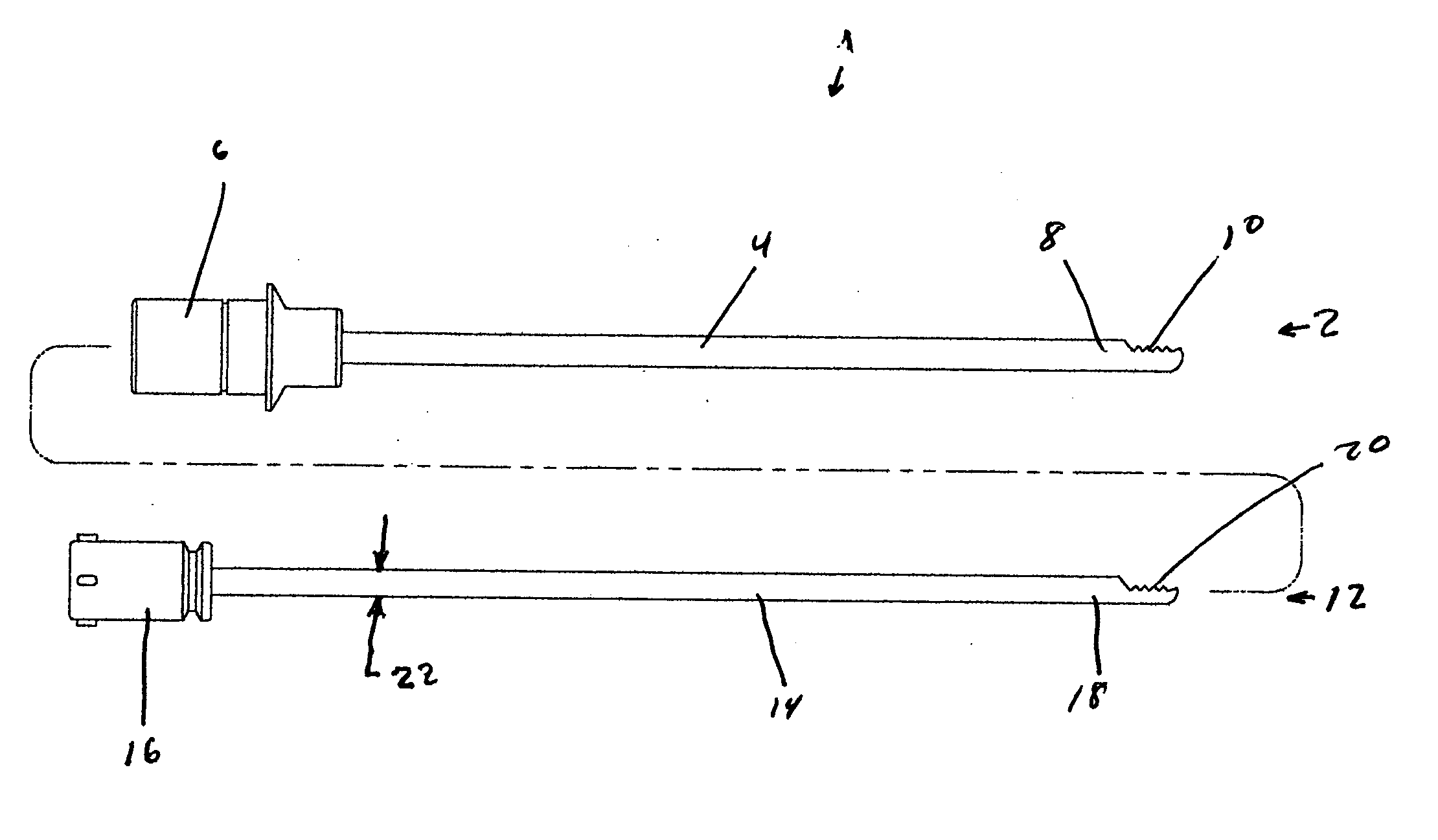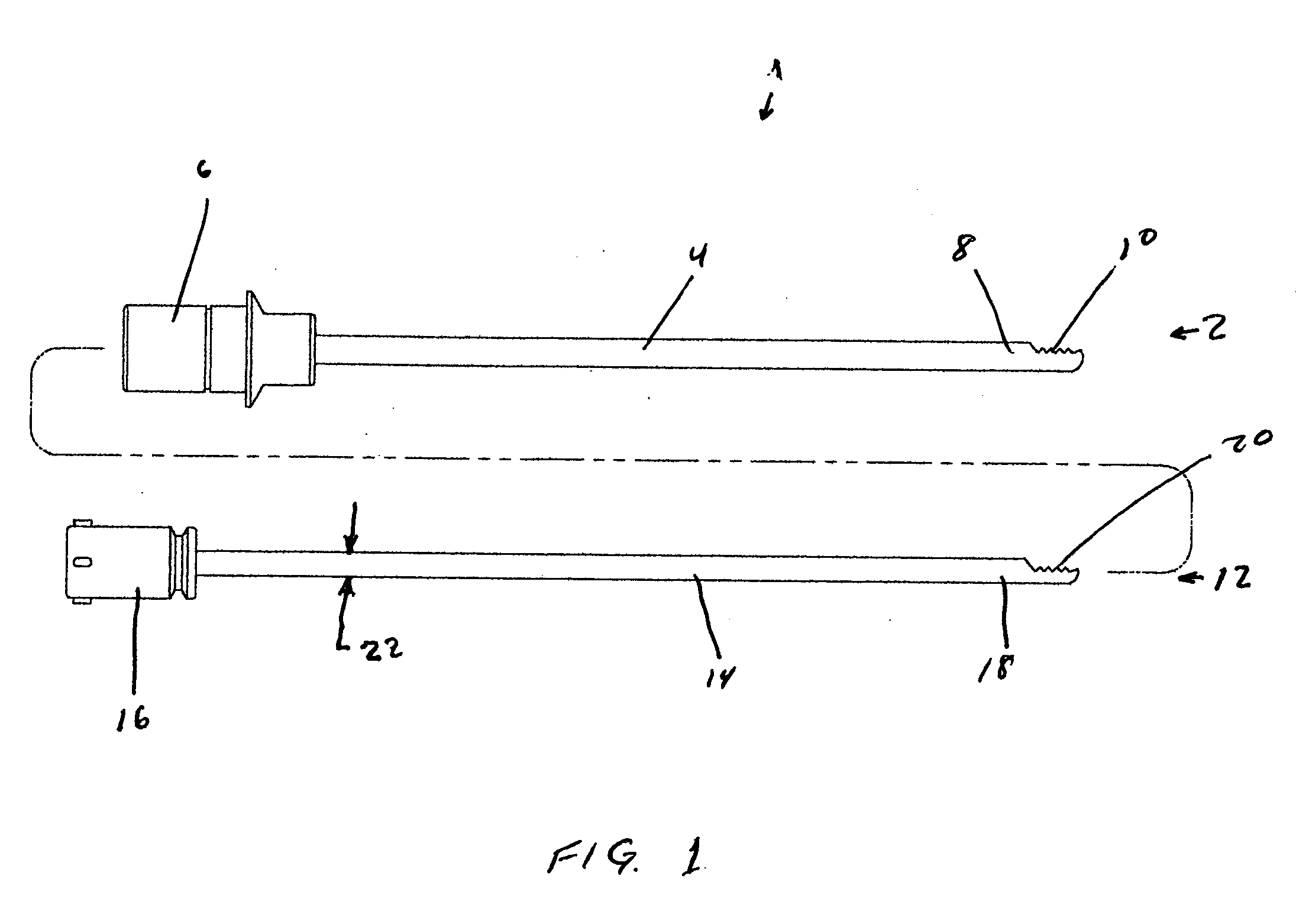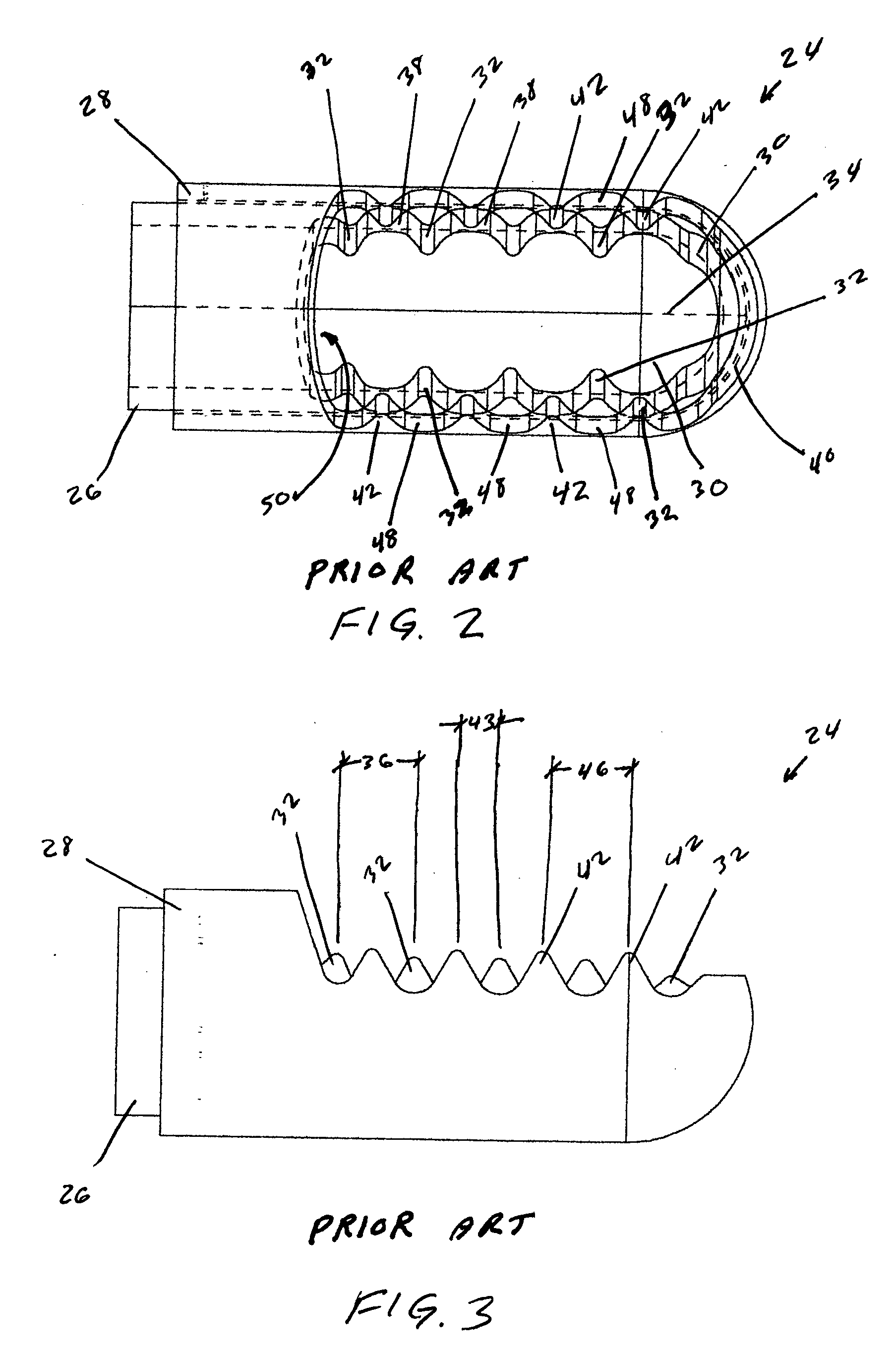Asymmetric shaver and methods for making same
a shaver and asymmetric technology, applied in the field of shavers, can solve the problems of inadvertent damage to the articulator surface, not always desirable to have the outer cutting edge with teeth, etc., and achieve the effect of increasing efficiency, increasing resection efficiency, and increasing resection efficiency
- Summary
- Abstract
- Description
- Claims
- Application Information
AI Technical Summary
Benefits of technology
Problems solved by technology
Method used
Image
Examples
Embodiment Construction
[0096] Referring first to FIG. 1, arthroscopic shaver 1 has an outer assembly 2 having a metallic, elongated, tubular distal portion 4 and a proximal portion 6 forming a hub suitable for mounting in a shaver handpiece. Distal portion 4 has a distal end 8 in which is formed cutting window 10. Shaver 1 also has an inner assembly 12 having an metallic, elongated, tubular distal portion 14 and a proximal portion 16 forming a hub suitable for transmitting rotational motion provided by a handpiece to inner assembly 12. Distal portion 14 has a distal end 18 in which is formed cutting window 20. Diameter 22 of distal portion 14 of inner assembly 12 is slightly less than the diameter of the inner lumen of distal portion 4 of outer assembly 2 so that inner assembly 12 may be rotatably positioned therein for use.
[0097] Referring to FIGS. 2 through 5 showing the distal end cutting windows of a prior art shaver 24, inner tube 26 is rotatably positioned within outer tube 28. Inner cutting window...
PUM
| Property | Measurement | Unit |
|---|---|---|
| idle time | aaaaa | aaaaa |
| acute angle | aaaaa | aaaaa |
| obtuse angle | aaaaa | aaaaa |
Abstract
Description
Claims
Application Information
 Login to View More
Login to View More - R&D
- Intellectual Property
- Life Sciences
- Materials
- Tech Scout
- Unparalleled Data Quality
- Higher Quality Content
- 60% Fewer Hallucinations
Browse by: Latest US Patents, China's latest patents, Technical Efficacy Thesaurus, Application Domain, Technology Topic, Popular Technical Reports.
© 2025 PatSnap. All rights reserved.Legal|Privacy policy|Modern Slavery Act Transparency Statement|Sitemap|About US| Contact US: help@patsnap.com



